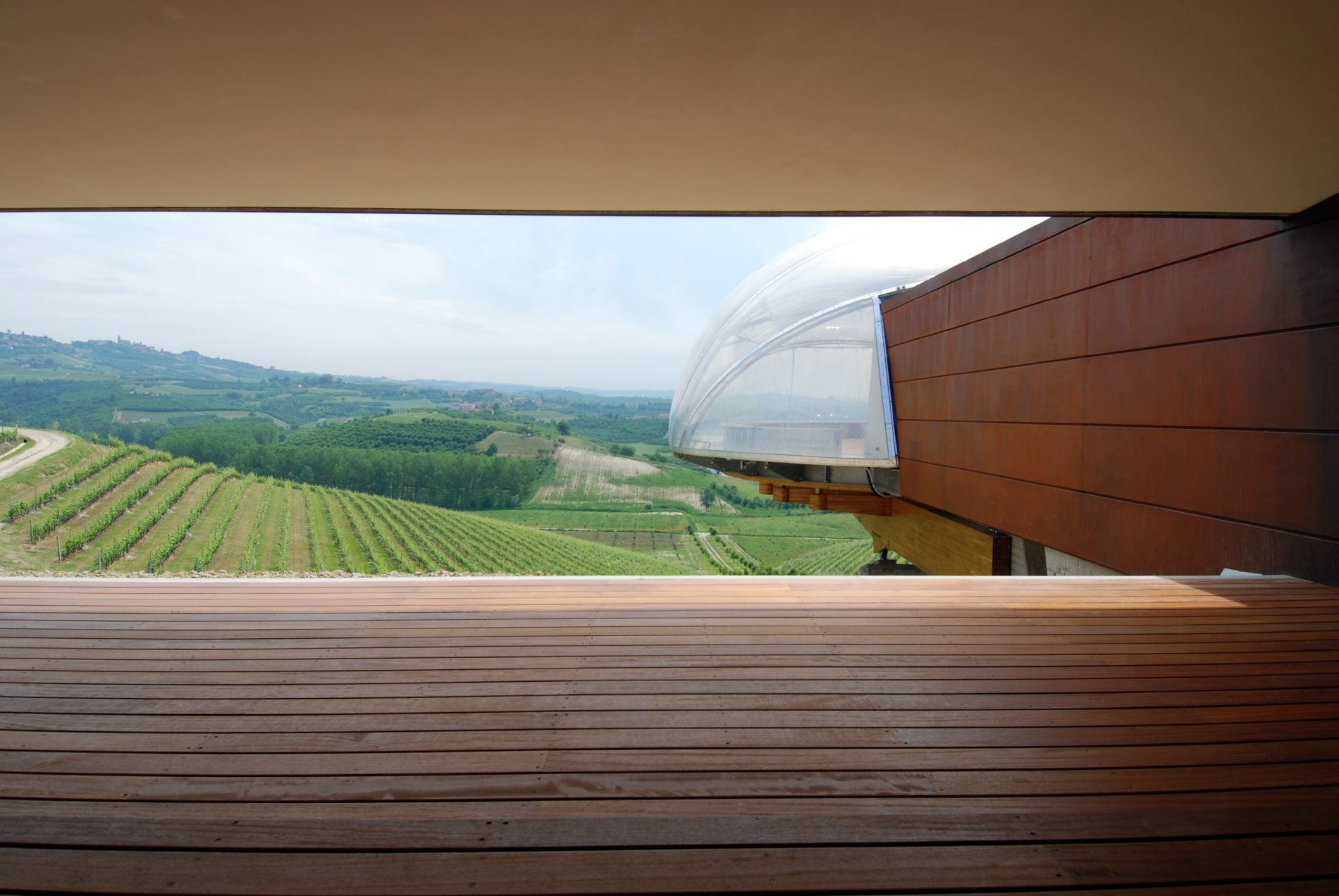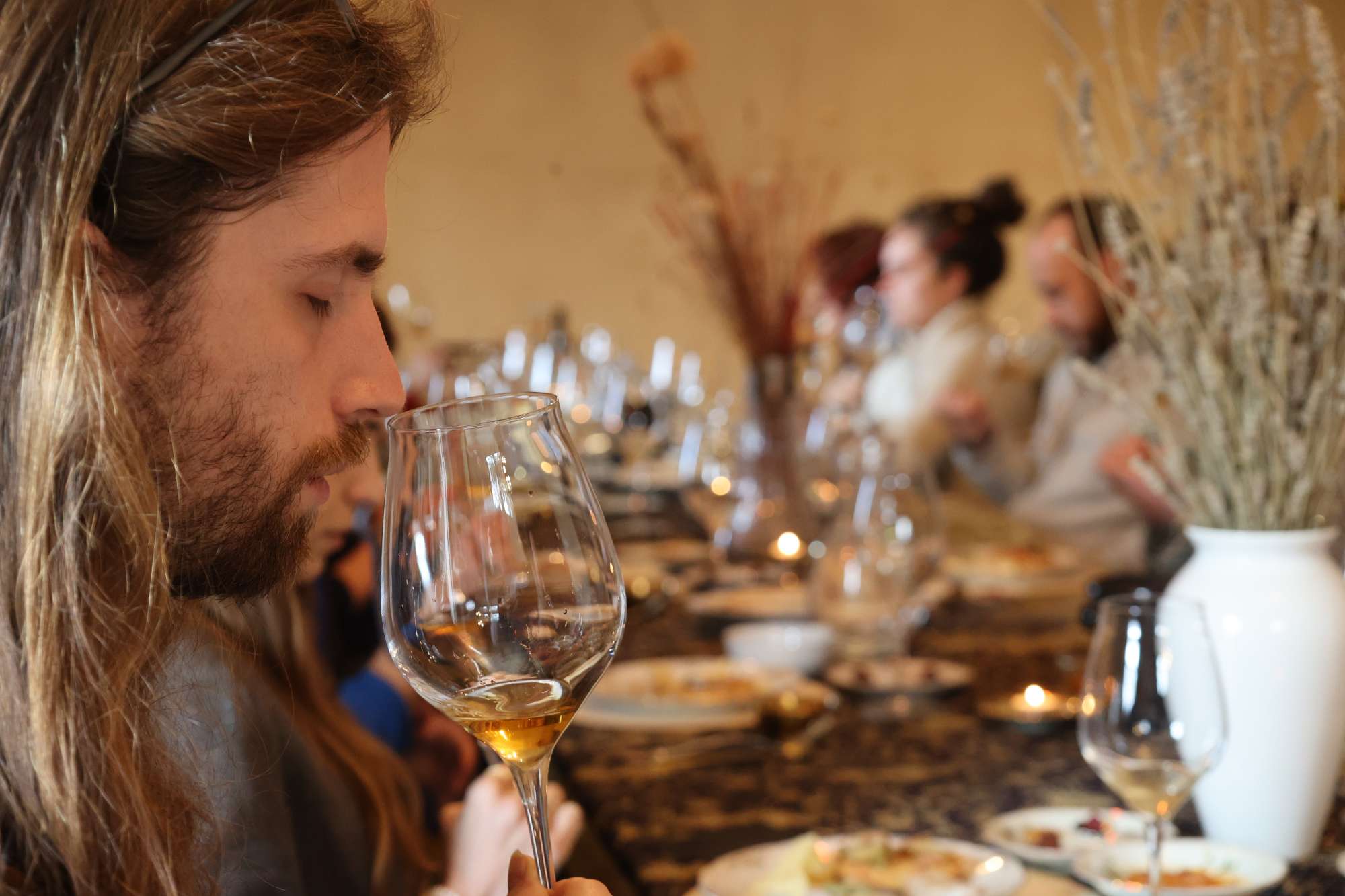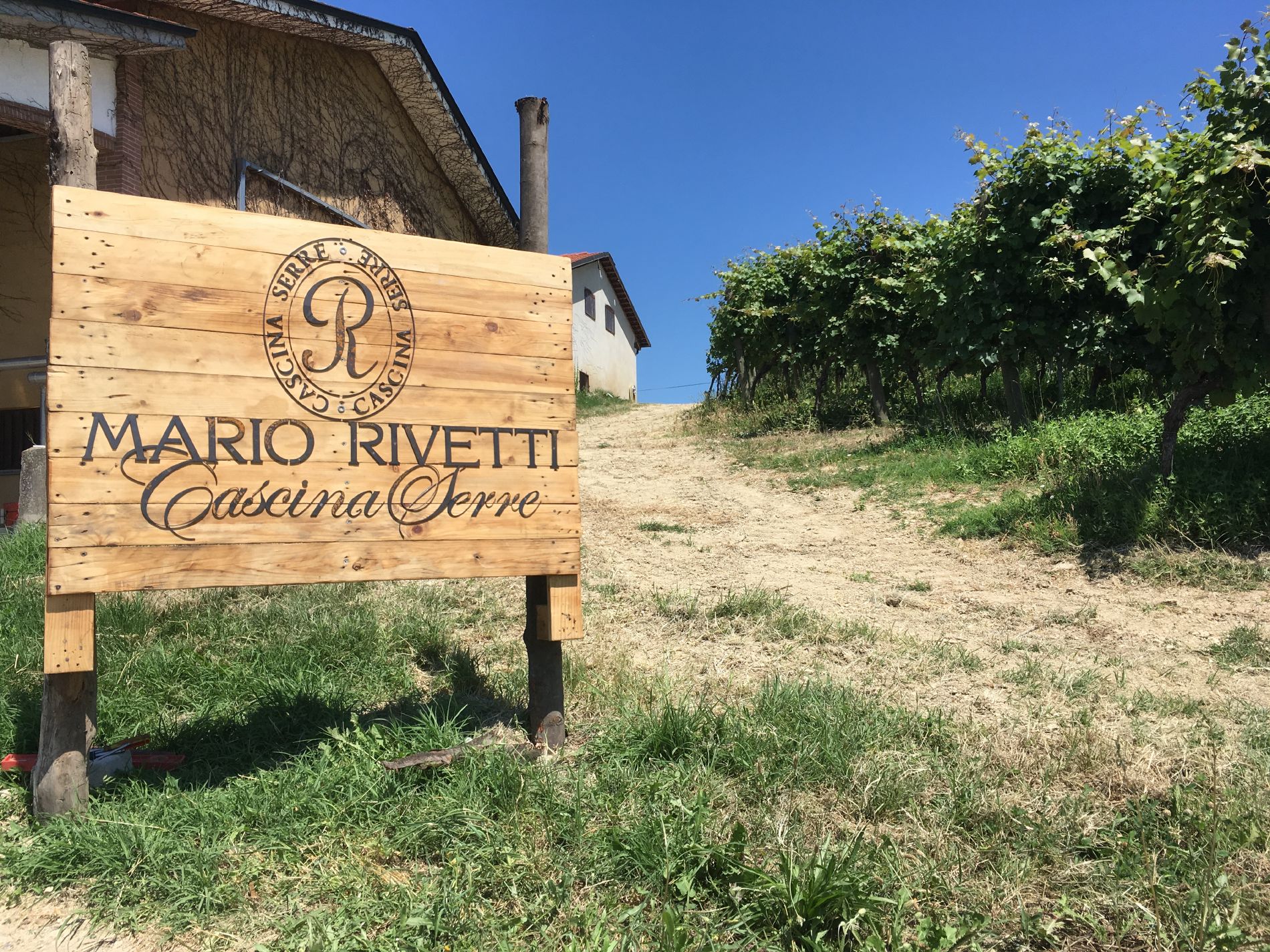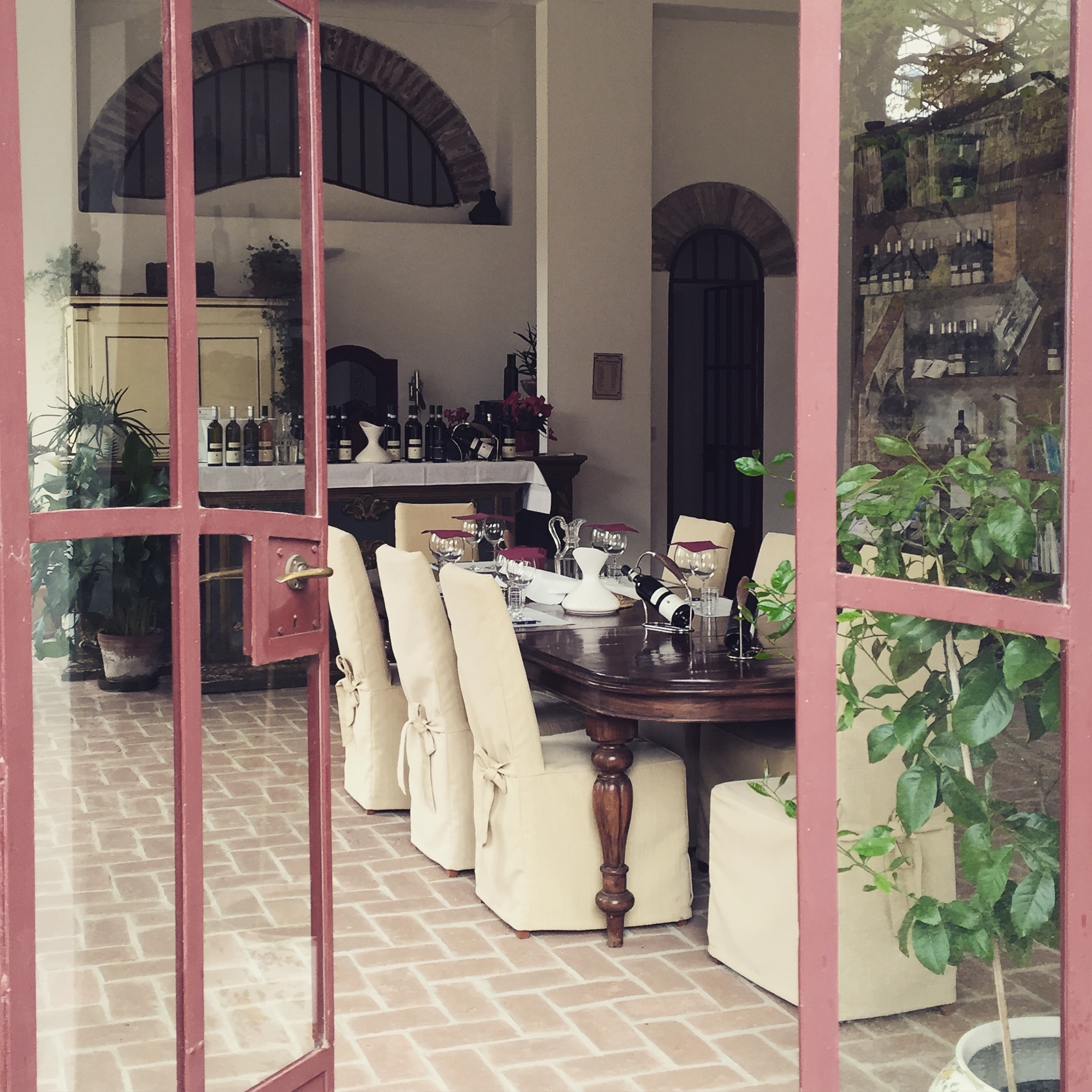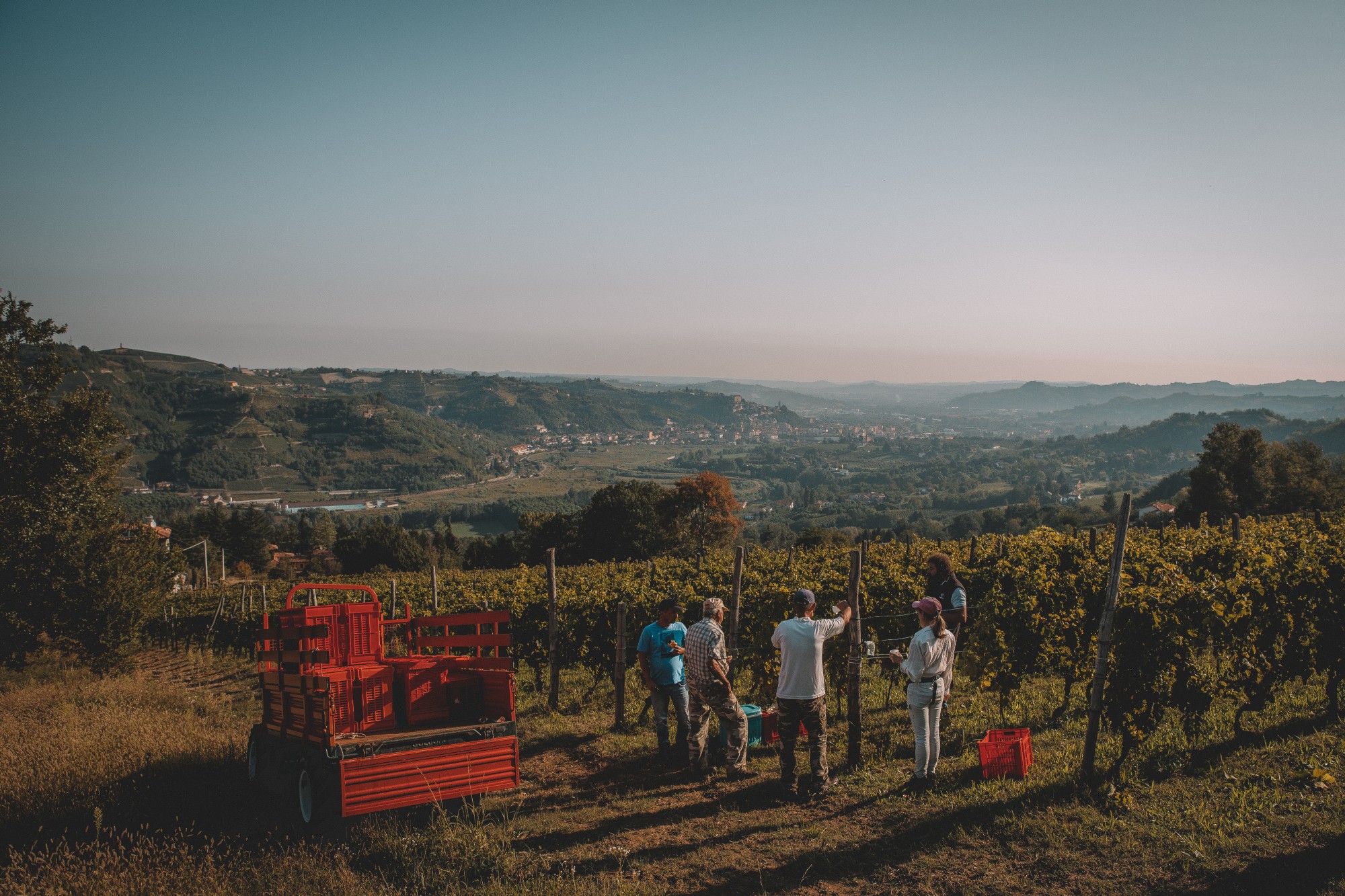Wandering in Langa
The most famous wineries in the Langhe Find out which ones to visit in 2025


The nobility of wine is precisely this: that it is never a detached, abstract object that can be judged by drinking a glass, or two or three, of a bottle that comes from a place where we have never been.
Mario Soldati
The Langhe is a land of golden hills and vineyards that tell centuries of wine history. A winery tour is the ideal way to fully understand this area: it’s not just about tasting a glass of Barolo or Barbaresco, but immersing yourself in the traditions, secrets and stories of those who work the vines with passion. In this guide you will discover the most celebrated wineries to visit in the Langhe, perfect for an unforgettable wine tourism itinerary, including excellent tastings and unique views.
If you’re looking for the best wineries in the Langhe to visit, you’ve come to the right place. From large, historic wineries to family-owned properties, each stop will offer you a personalized experience: tastings of fine wines, visits to the most renowned crus and breathtaking views of the Langhe, Roero and Monferrato landscape.
Whether you are a wine connoisseur or an enthusiast looking for a first taste, you will find valuable insights to enrich your wine tour.
The Ceretto winery, one of the most famous in the Langhe, was founded in 1936 by Riccardo Ceretto. The famous grape “Acino,” an architectural masterpiece with a futuristic aftertaste, stands out over their estates and already offers a first taste of their philosophy.
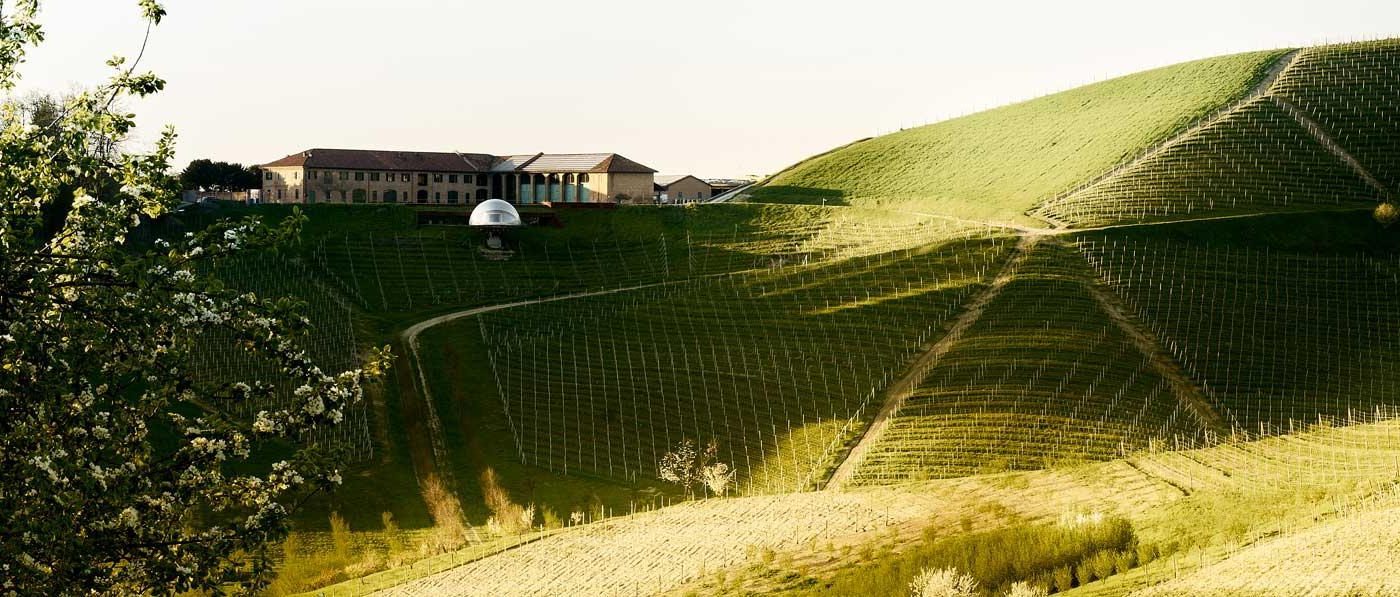
The winery has pioneered the use of sustainable and organic viticulture techniques and produces some of the best wines in the region. A visit to the winery includes a tasting of their fine wines, including Barolo, Barbaresco, Dolcetto and Moscato d’Asti. The winery also offers a culinary experience, with traditional Piedmontese dishes accompanied by a selection of wines.
For those who love contamination.
The winery tour includes:
Cantine Coppo is a world-renowned winery located in the town of Canelli, in the Asti area, and was one of the first in Italy to bottle wine under its own brand name.
Founded in 1892, the winery covers 27 hectares of vineyards and its main core is in Monferrato.
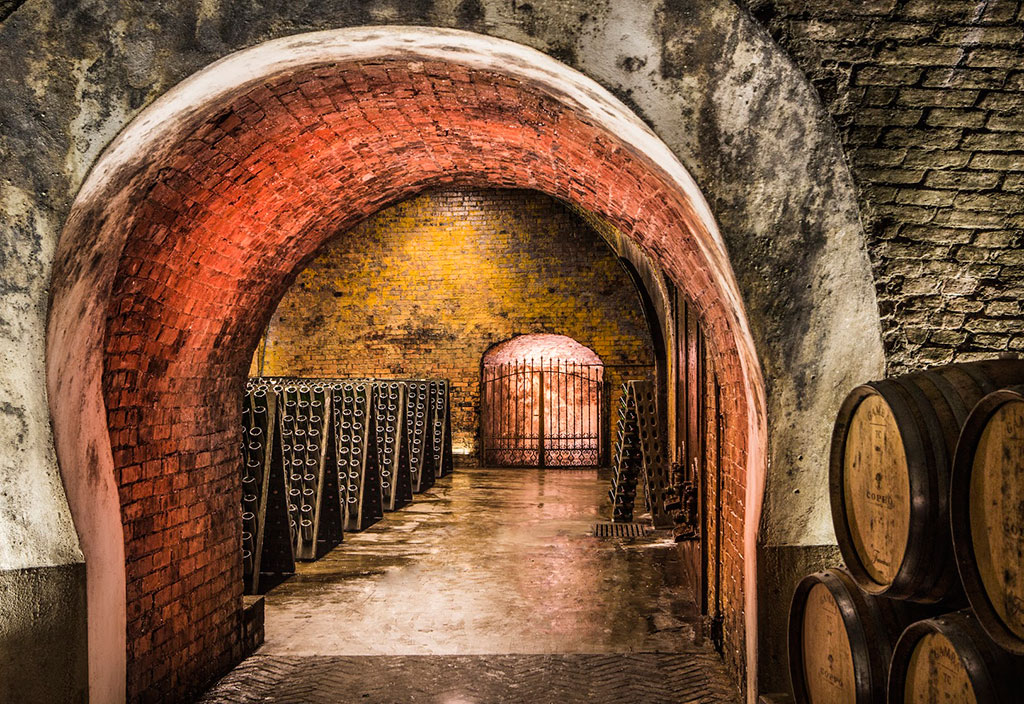
Its uniqueness, however, is hidden inside: in its basement there are, in fact, a series of ancient tunnels dug by hand into the tuff, called“infernot,” which are so striking that they became a UNESCO World Heritage Site in 2014 and have allowed the wine to be perfectly preserved.
For those who never cease to wonder
Here you will be able to:
The Marchesi di Barolo winery is one of the oldest and most prestigious in the region, founded in 1807 by the Marchesi Falletti family. Located in the heart of the area’s iconic wine, for six generations the winery has produced some of the Langhe’s most celebrated wines, including Barolo, Barbaresco, Barbera d’Alba and Dolcetto.
The visit includes a tasting of their wines and a tour to the historic underground cellars, where the wines are aged in oak barrels.
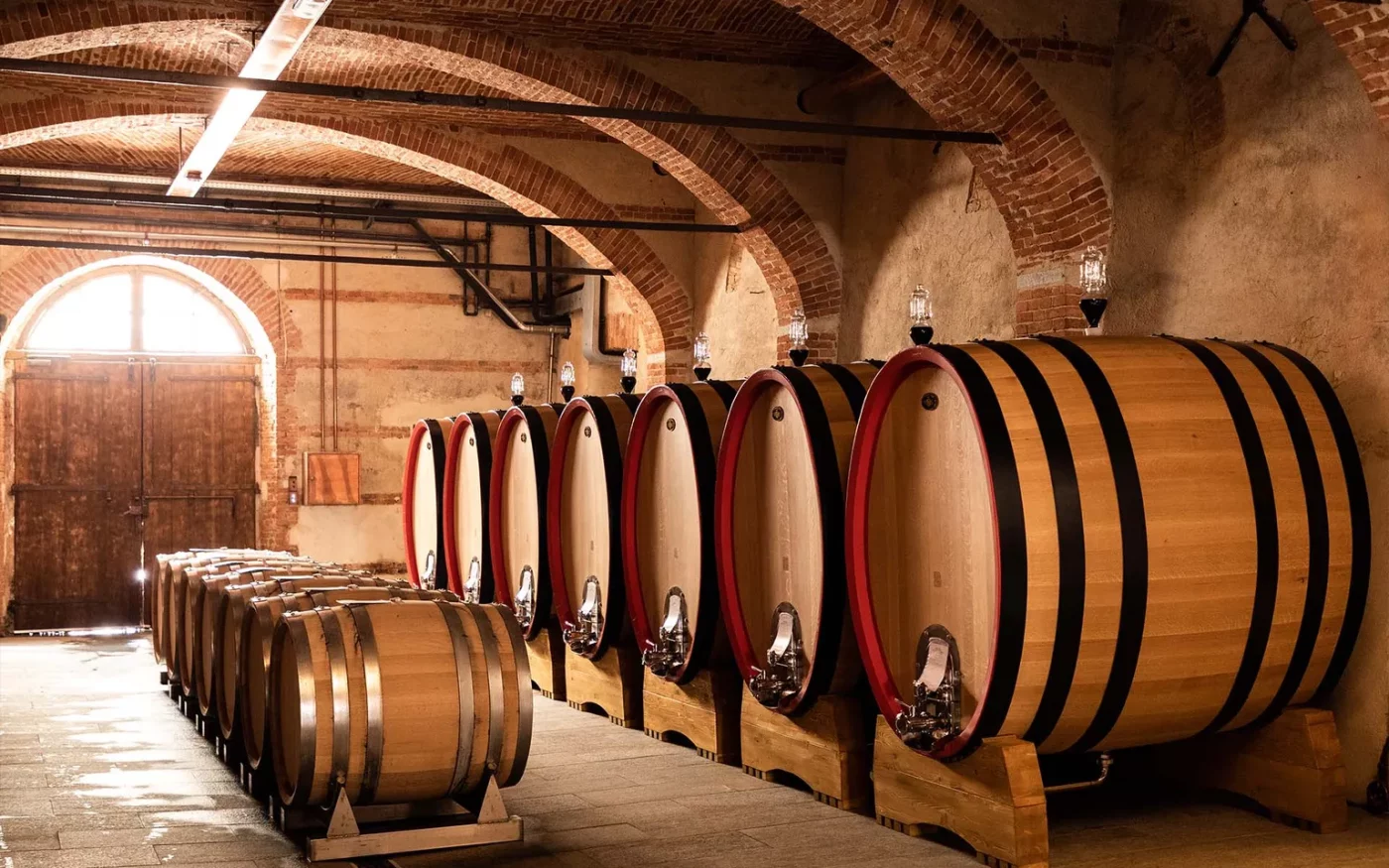
Here you can still admire the five barrels of Marchesa Giulia Falletti Colbert and the collection of rare bottles of Barolo Riserva from the late 19th century.
For those who love tradition.
Highlights of the visit:
Poderi Luigi Einaudi is a farm founded in 1897 by the President of the Italian Republic, Luigi Einaudi, in the heart of the Langhe, in Dogliani.
The farm began as a wine estate, but in later years it expanded to become a full-fledged farm, also growing grains, hazelnuts and other crops counting 13 farms of about 70 hectares.
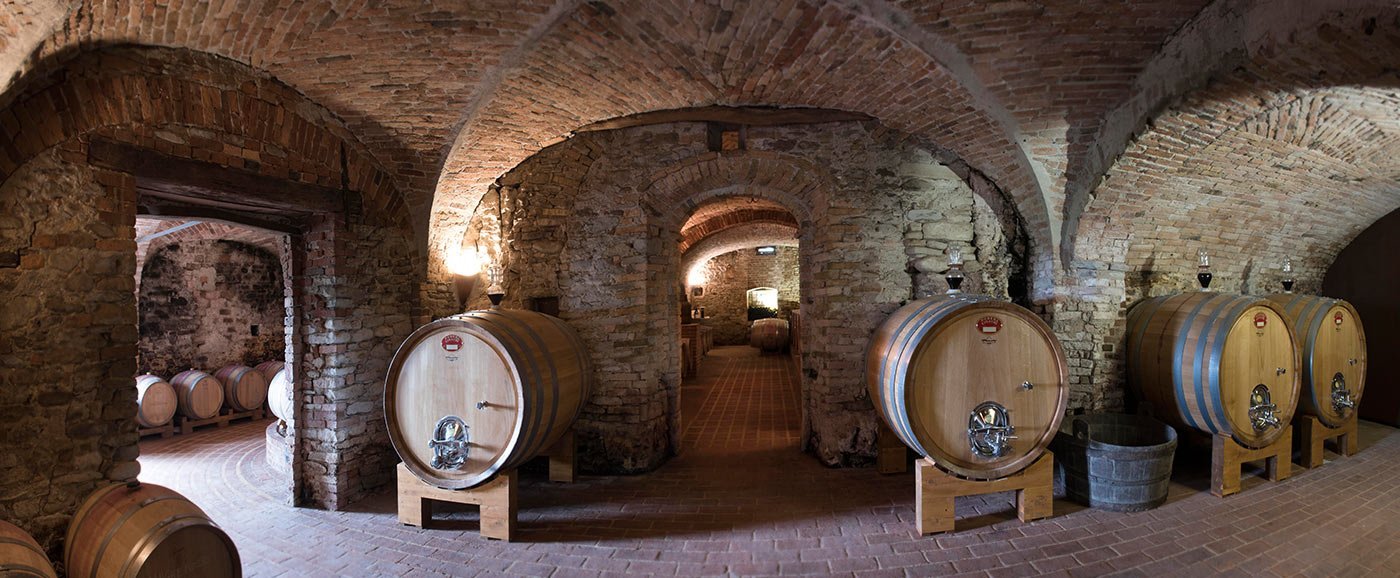
In 1998, Poderi Luigi Einaudi obtained “Organic Farm” certification for the production of wine, olives and hazelnuts.
Today, Poderi Luigi Einaudi is run by the fourth generation of the Einaudi family and produces a wide range of wines, including the famous Barolo, but also Barbera, Langhe Nebbiolo and other white wines such as Roero Arneis.
For those who live history with an eye to the future.
During the visit you will be able to:
Curiously evocative in name, the winery was established in 2007 by Sandra Vezza, “the repentant teetotaler” herself.
The winery’s architecture is characterized externally by two large stacked blocks reproducing two wine crates and surrounded by the rows of vines of its production.
Not only externally but also internally it is capable of amazement: large multicolored murals, Gufram design pieces like an unconventional and dreamlike pop dream combined with the quality of wines from original labels for whites and reds such as Barbera, Nebbiolo, Nascetta and Dolcetto.
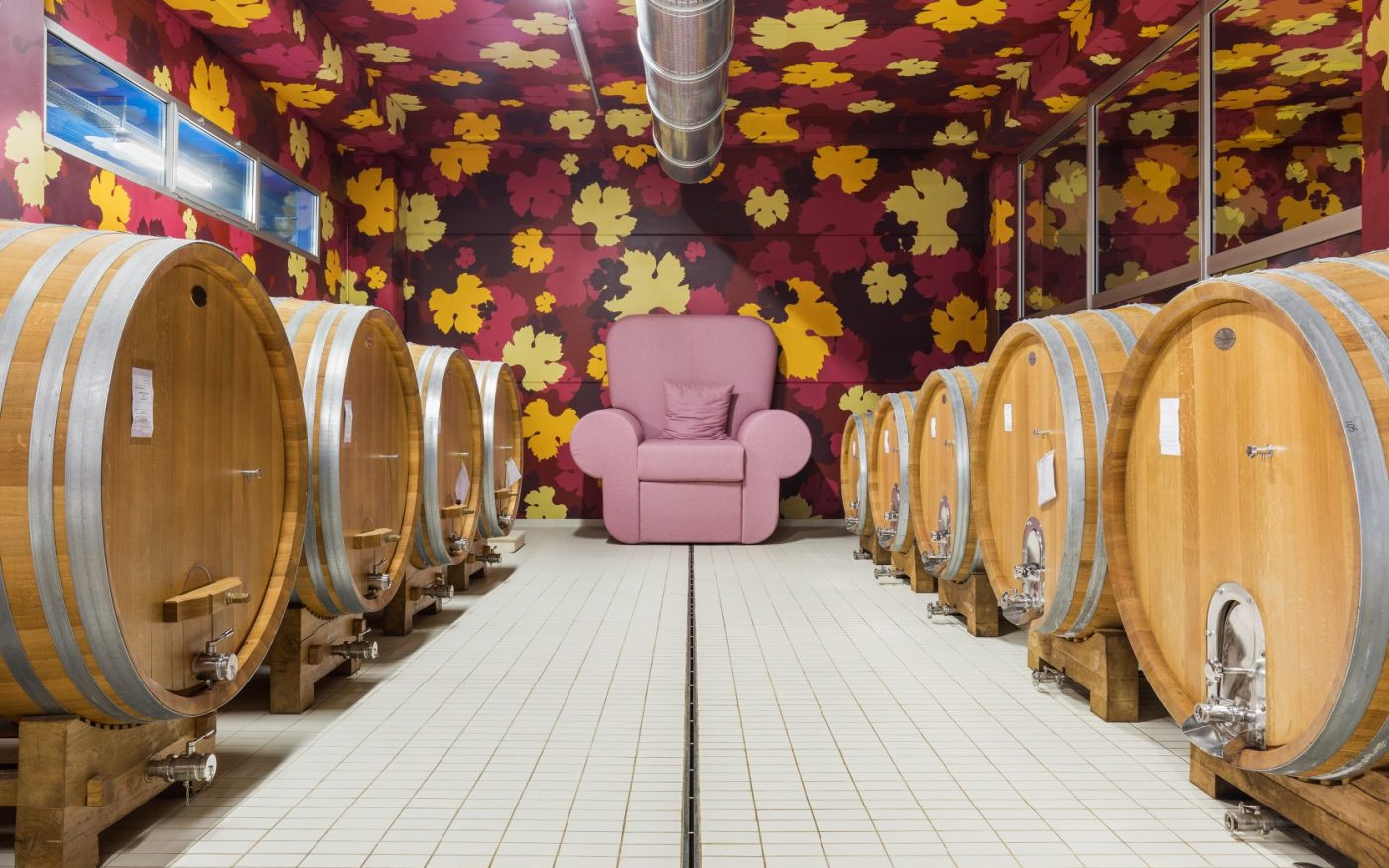
The winery is committed to environmental sustainability and uses organic and biodynamic farming techniques to cultivate its vineyards. It is also dedicated to the preservation and recovery of native grape varieties in the area.
For those who love contemporary art.
Highlights:
However, there are not only well-known companies such as those listed: it is beyond enriching to visit small local producers who will give you a welcome that is perhaps less “prestigious,” but certainly more familiar and genuine. Below are some suggestions!
Cascina Bauci is located in the hills of La Morra and is run by Emanuele Buganza and Marta Indra Di Giulio. Here wine production, art, Mindfulness and wellness experiences are blended, creating a unique and regenerating environment.
Cascina Bauci is a unique and evocative place nestled in the hills of the Langhe, in La Morra. More than just a winery, it is a center dedicated to artistic production, Mindfulness and experiential wellness.
Here, traditional tastings are transformed into immersive and rejuvenating experiences, offering a journey of reconnection with nature and with oneself. In addition to wine, Cascina Bauci offers meditative paths, creative workshops, holistic activities and moments of conviviality between art and food.
The project is the result of a meeting between Emanuele Buganza, a born winemaker, actor and puppeteer for RAI and international productions, and Marta Indra Di Giulio, Mindfulness teacher, social and community theater expert, taster and performer.
Together, we manage unconventional art spaces with performance art, theater and visual art activities.
Cascina Bauci is also an art residency that welcomes selected artists.
Names such as Matteo Raciti, Bruno Geda, Tonichina, Irene Von Dorigotti and Lorenzo Gianmario Galli have contributed to the creation of works that enrich the farmhouse, experimenting with different techniques and materials, but always with a common thread: the profound bond between human beings and nature.
Prominent among these installations is Matteo Raciti‘s Oltrecielo, a work that visitors can walk through and experience firsthand, becoming an integral part of the space that houses it.
You can read more about Cascina Bauci here.
Marta and Emanuele take care of hospitality and tastings together.
Oltrecielo is a site-specific installation created by Matteo Raciti that seems to mirror Calvino’s description of Bauci, a flying, dreaming city, eternally floating in the clouds.
The Mario Rivetti winery is located in a highly panoramic point, in the middle ground between the Barolo and Barbaresco areas.
Just above Alba, not more than three kilometers from the center, stands the Mario Rivetti winery, founded by the namesake in the late 60s.
The farmhouse is located in a highly panoramic point, in the middle ground between the Barolo and Barbaresco areas.
The 10 hectares of property are entirely in the municipality of Alba, precisely attached to the company, and have been worked for three generations with passion and with attention towards sustainable viticulture, which excludes pesticides and herbicides.
Mario’s daughters Anna and Loredana grew up among vineyards and wines and from 2000, at a very young age, they led the company together with Giuseppe, husband of Anna and trifulau for hobbies and passion.
The two sisters follow each step with maximum commitment and dedication, from cultivation to marketing, producing high quality wines capable of describing the union between the territory and the grape variety from which they derive, with an all-female touch.
Quella della famiglia Malabaila è sicuramente una delle più antiche produzioni enologiche, ed è oggi sinonimo di biodiversità e tipicità.
Strolling along in the town of Canale, the capital of Roero, one can’t help but notice its fascinating castle, located right in the centre of the town and surrounded by a splendid park.
It is precisely in this location that the Malabaila winery historically ran its business, founded by the ancient family of the same name towards the end of the 1300s. The Malabaila, who became owners of the castle over the years, making it their noble residence, were one of the first families in the area to believe in the potential of wine.
Here began the long history of the winery, whose wines also arrived on the tables of the Princes of Piedmont, as evidenced by the nine letters found in the family’s archives.
As of 2004, the production, due to space and working comfort, was entirely moved to the Pradevaglio winery, a historic rural building located in the centre of the 22 hectares of vineyards.
This gave the winery the opportunity to reinvent itself as an extremely sustainable reality, both from the point of view of architecture and consumption and with respect to work in the vineyard.
You can read more about Malabaila here.
A noble residence acquired over the years by the family.
The production was moved in 2004 to a larger and more modern location.
The family rents the castle spaces, upon reservation, for various ceremonies and events.
L’Azienda Marco Capra, in località Seirole, sulle colline di Santo Stefano Belbo propone visite in cantina e degustazione guidata. È possibile acquistare direttamente i vini in Cantina e farli spedire alla destinazione scelta.
The Marco Capra farm is located on the hills of Seirole, in the municipality of Santo Stefano Belbo about 6 km from Canelli.
The road that reaches the winery is a succession of scenic bends that embrace the Langhe and Monferrato, in an alternation of vineyards, woodlands and small villages recognizable by ancient towers, castles and churches.
An evocative landscape that reaches its peak in October and November.
The foliage dyes the vineyards with the warmest colors and the morning mists lay like a thin veil on the soft shapes of these hills.
The territory is the heart of Pavese’s places: Santo Stefano Belbo is the town that gave birth and burial to the writer Cesare Pavese and is the setting in which his latest novel, “La Luna e i falò“, published in 1950, comes to life.
You can read more about Marco Capra here.
The territory is that of the Municipality of Santo Stefano Belbo, recognized as a UNESCO heritage site
The work in the vineyard is in full swing even in winter, between routine work and new projects
The harvest begins at the end of August with Chardonnay and Pinot Nero for the sparkling wine bases and in the first days of September with the grape varieties: Moscato, Chardonnay and Nascetta
The wineries of the Langhe are true temples of wine, where you can discover the secrets of producing some of Italy’s finest wines. In addition to tastings, these wineries offer the chance to immerse yourself in the history and culture of the area, with guided tours that take you on a discovery of winemaking methods, the barriques in which the wines are aged, and the vineyards where it all began.
A visit to wineries in the Langhe is not only an opportunity to taste wines of the highest quality, but also to connect with the wine culture of Piedmont. Each winery has a unique story to tell and offers customized tours that will allow you to explore the secrets of local winemaking. Some of the most famous wineries also offer gastronomic experiences, where you can pair wines with traditional Piedmontese dishes.
Visiting the wineries of the Langhe is an experience that goes beyond just wine tasting. It is a journey through tradition, culture and unique landscapes that will leave you with unforgettable memories. If you want to discover where Italy’s most celebrated wines are born, this is the place to start. Plan your visit now and get ready to experience an enological adventure among the hills of the Langhe.
